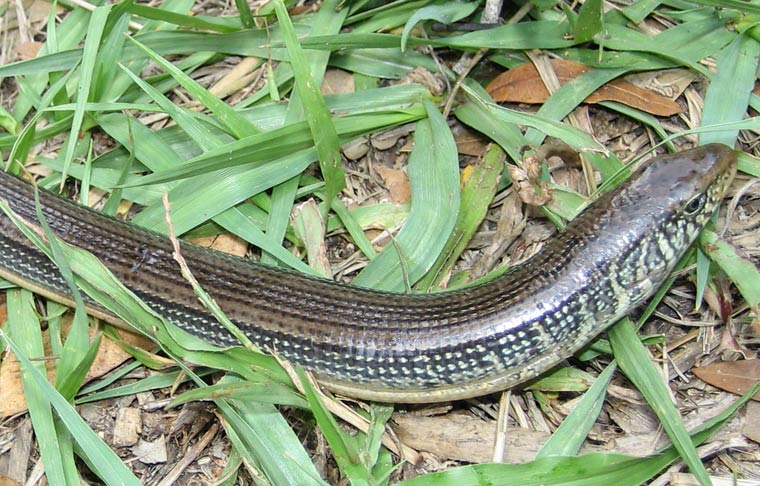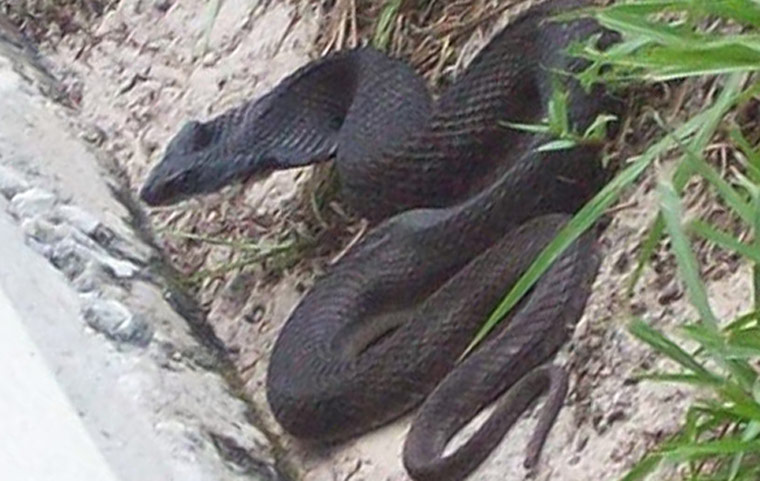-
info@aaanimalcontrol.com
Call us for help in your town
Humane Wildlife Education
Do Snakes Actually Have Bones?
Need snake removal in your hometown? We service over 500 USA locations! Click here to hire us in your town and check prices - updated for year 2020.
Snakes do have bones, although they seem to contort themselves in such unusual positions sometimes, it would be easy to believe that they didn’t have an internal structure. They do have these bones, but they’re not made up in the same way as other animals. There are no limbs, but the animal does still have ribs, vertebrae, and also a skull. In fact, snakes have many more bones than humans do. We have just 206 bones, whereas snakes have in excess of 1,800. It all depends on the species. They all have the same head build, with 10 bones making up both the jaw and skull.

Because there are only three types of bone in the snake, it has the flexibility to move around in the way that it does, particularly with those snakes that constrict their prey. By winding themselves around the victim, they suffocate it to death, which then leaves them to eat their meal in peace.
Learn more about snake hearing: How do snakes move?
Obviously, having a different skeletal system to us also means that the snake will have a slightly different internal makeup than we do too. The entire first third of the snake will be made up of the throat, and other organs that are round or kidney-bean shapes in us are long and elongated in a snake’s body. These include important organs such as the liver, kidneys, lungs, and also the stomach.
Large snakes will have the most bones. A seven meter long python, for example, could have the most bones - 1,800. Smaller snakes that only measure in at 10 cm will have considerably fewer bones - 600 or so.
How big do snakes get?
Need snake removal in your hometown? We service over 500 USA locations! Click here to hire us in your town and check prices- updated for year 2020.
Snakes can grow to varying lengths, ranging from the ridiculously small to the ridiculously large. It all depends on where they live, how well they're living life, and also what kind of snake they are. Some species of snake are well known to be larger than others.

The Diamondback rattlesnake, for example, is one of the largest snakes found across America, and this chap can grow to over eight feet in length. That's over 2.5 meters, in case you were wondering. Specimens found over 6 foot are considered very rare, and the venomous snake generally falls in the four to five foot bracket.
The longest snake in the world is the green anaconda, and it has been said that this beast can grow to 30 feet in length, or close to 9 meters. It would seem that 18 feet is a more reliable length, but most anacondas are generally about 10 to 12 feet long.
Western rat snakes are also quite long snakes, measuring in at around eight feet in length. You'll find these across Canada and some places in the States, but they help to keep the rodent population down, with rats and mice being the main food in their diet. For the record, it is illegal to collect and / or kill these snakes across many states. If you encounter one of these, you will need to call a snake removal expert.
The reticulated python is another beast of a snake, but you're more likely to encounter these in tanks rather than in the wild. They generally live in Southeast Asia. One particular reticulated python in captivity has grown to a staggering 25 feet or 8 meters in length. This snake is called Medusa and she's actually in the Guinness Book of Records for her record-breaking length. She's ten years old, and she eats huge food - hogs, rabbits, and even deer. Oh, and in case that wasn't impressive enough, she weighs 350 pounds.
Different species of snake will have different lengths and weights. If you live in an area of the USA that is rife with snakes, we would highly recommend you take some time to educate yourself on the kinds of species you are likely to come across. At least if you know the difference between a venomous and non-venomous species, you can protect yourself. We would never recommend getting too close to a snake, however, as whether they're venomous or not, they can still pack a very nasty bite that we're sure you wouldn't appreciate.
There seems to be footage of “giant” snakes on social media all the time, but we wouldn't recommend that you take the stories too seriously. Many of them are hoaxes. There have been reports of 35 feet anacondas in Brazil, something that would rival the 40-foot long “ancient” snake that was found in fossil form. The aptly named Titanoboa apparently existed over 58 million years ago, and was said to have sit so high off the ground, the thickest part of it would have come up to the average man's waist.
For more information, you may want to click on one of these guides that I wrote:
How much does snake removal cost? - get the lowdown on prices.
How to get rid of snakes - my main snake removal info guide.
Example snake trapping photographs - get do-it-yourself ideas.
Snake job blog - learn from great examples of snake jobs I've done.
Do snakes chase you?
Do snakes hibernate?
Do snakes jump?
How do snakes kill their prey?
How to identify a shed snake skin


















